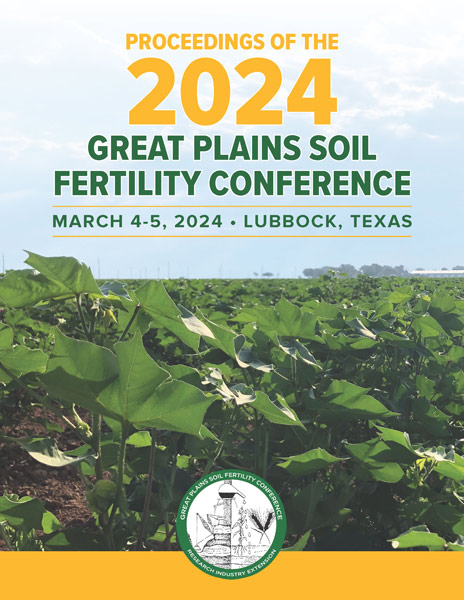Conference Proceedings Available!
Proceedings
Authors
| Filter results4 paper(s) found. |
|---|
1. Effects of Climate Change and Narrow Rows with Higher Plant Densities on Yields of Irrigated CornClimate change is significantly impacting agricultural systems worldwide, and although there are reports of these impacts contributing to higher yields in some regions, the general consensus is that there will be negative impacts on yields and soil quality across large regions. Management practices that can contribute to higher yields and adaptation to a changing climate will be important during the 21st century. This presentation will cover results from two manuscripts that are currently... J.A. Delgado, B. Floyd, R. D'adamo, A. Villacis, A.D. Brandt, A. Halvorson, C.E. Stewart, J. Alwang, S. Del grosso, D.K. Manter |
2. Soil Carbon and Agroecosystem Benefits of Conservation Management and Perennial Bioenergy Crop ProductionConservation agricultural management practices and perennial bioenergy crops can increase soil organic C (SOC) stocks on marginal soils yet the time necessary to observe these benefits, as well as the upper limit of C storage isn’t known. Co-benefits often associated with SOC accumulation are positive effects on water and nutrient retention, soil microbial biomass and diversity and soil structure, resulting in better soil quality. However, interactions between nitrogen fertilizer, crop biochemistry,... C.E. Stewart, V.L. Jin, M.R. Schmer, R.B. Mitchell, C. Williams, G.L. Miner |
3. Soil Microbes Are Critical to Maintaining Soil Fertility in the Great PlainsSoil in the Great Plains is known to be susceptible to wind and water erosion due to moisture deficits throughout the region that limit soil organic matter (SOM) accumulation that helps form stable soil structure. Conservation management practices like reduced tillage are emphasized to maintain SOM that provides habitat for soil microbes to perform ecosystem services related to nutrient cycling and soil aggregation to increase resistance to erosion and maintain fertile topsoil. Soils under long-term... W. Roper, V. Acosta-martinez, J. Moore, M. Mikha, D.K. Manter, C.E. Stewart, R.M. Lehman, M.A. Liebig, V.L. Jin |
4. Side-dress Applied ESN Reduces N2O Compared with Single Urea Application for Irrigated CornEnhanced efficiency fertilizer (poly coated urea, may reduce soil nitrous oxide (N2O) emissions while maintaining or increasing crop yields. However, further increases in N fertilizer efficiency may be attainable with a starter fertilizer application followed by side-dressed EEF. We monitored soil N2O using surface chambers from three N treatments [202 kg N ha-1 single application of urea, 34 kg N ha-1 starter urea combined with 168 kg N... S. Del grosso, J. Delgado, C.E. Stewart |
